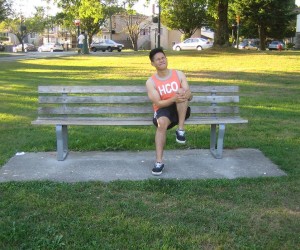Baker’s cyst is a protuberant swelling at the rear part of the knee. It is typically caused by an underlying injury or condition that affects the knee joint. To learn to recognize and manage knee conditions including Baker’s cyst, register for a first aid course with Saskatoon first aid today.
What are the symptoms?
It is important to note that Baker’s cyst is a round-shaped swelling that develops at the rear part of the knee. This is often about the size of a golf ball but can vary over time. The sensation of pressure in the rear part of the knee joint can be felt that can go down into the calf muscle. The individual will find it difficult to bend the knee joint.
When a torch is shone through the lump, it is possible to see a reddish glow around the lump which indicates that the swelling is filled with fluid.

A close look on Baker’s cyst or popliteal cyst
In the hollow space at the back of the knee is a bursa filled with fluid that is used in lubricating the joint. Once the back part of the knee joint becomes swollen, this will cause the bursa to swell as well. In most cases, there is an underlying condition of the knee that causes an increase in the synovial fluid.
This fluid will spill into the bursa at the rear part of the knee, resulting to an increase in size and swelling which causes a popliteal cyst or Baker’s cyst. Among young individuals, the cause might be a torn cartilage meniscus. As for older individuals, arthritis is usually the possible cause.
Treatment
Always remember that rest is a vital part of the treatment. The individual must avoid activities that will aggravate or worsen the condition. If possible, the individual should change training methods and opt for cycling, swimming or use a cross trainer machine for running.
It is possible that the symptoms will simply vanish. Among children, the condition can clear up on its own. On the other hand, if it does not, surgery is an option but there is a possibility that the cyst will return.
Using a compressive wrap around the knee will help reduce the swelling. If the symptoms do not clear up, it is best to seek medical care so that proper assessment of the knee can be done in order to identify the cause of Baker’s cyst.
When to consult a doctor
The doctor will assess the knee and diagnose the exact cause of the swelling in the first place. In serious cases, the doctor will recommend surgery in order to correct whatever is causing the swelling including foreign bodies, cartilage meniscus or bursa that might require removal. Take note that the individual will not engage in any activity for 8-12 weeks after the surgery.
You have to be mindful that the lumps in the rear part of the knee are likely to be Baker’s cyst but can also be a tumor or even an aneurysm which is a swelling in an artery. If uncertain, it is always best to consult a doctor for proper assessment of the condition.
